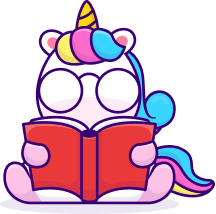Montessori Method
We are dedicated to the care and education
Our Educational Programs
Montessori environment is a child’s friendly conducive environment which encourages the child’s need for independence. Here, child will learn at his own pace without any pressure. Thus normalization will be attained through psychosomatic unity further helps in the holistic development.
ORIGIN OF THE METHOD AND LONGEVITY
This method was originated in 1907 by Dr. Maria Montessori. She was an Italian doctor turned educationalist who constantly observed children’s behavior for about 22 years. She developed learning apparatus that she used as a tool to observe and watched the process of normalisation in children. Her recordings and the provision that she developed were what she termed as “Montessori Method”.


ROLE OF THE MONTESSORI ADULT (TEACHER)
Dr. Montessori believed that teachers should focus on the child as a person not on the daily lesson plan. Montessori teachers lead children to ask questions, think for themselves, explore, investigate and discover. Their ultimate objective is to help their students to learn independently and retain the curiosity, creativity and intelligence with which they were born.
FIVE MONTESSORI FOCUS AREAS
Montessori environment is a child’s friendly conducive environment which encourages the child’s need for independence. Here, child will learn at his own pace without any pressure. Thus normalization will be attained through psychosomatic unity further helps in the holistic development.
01. EXERCISE OF PRACTICAL LIFE ACTIVITIES
These are introduced to the children so that they are equipped with daily practical life skills. The activities are simple, familiar and concrete exercises as they have seen adults performing them in their daily routines such as pouring water from jug, threading beads, rolling chapathies etc., these are designed to provide real life experience. These activities develop independence, concentration, and self-confidence. Psychosomatic unity is also attained leading to normalisation. Performing these activities also refines fine motor skills. Self-esteem is also strengthened here.
2. SENSORIAL ACTIVITIES
Young children learn about the world around them through the constant use of all their senses. Activities performed using senses are called sensorial activities. Sensorial materials are scientifically designed aiming at the total development of the child. Each material isolates properties like size, colour, texture, dimensions, shapes, taste, smell etc., Though there are five sense of organs, house of children deals with visual sense, tactile sense, olfactory sense, gustatory sense, thermic sense, kinesthetic sense, baric sense, stereognostic sense and chromatic sense. These activities bring about perfection in children. And strongly, they lay foundation for further arithmetic work.
3. LANGUAGE ACTIVITIES
Language is a powerful tool in learning process. It is used by man for communication and to express his thoughts. Children learn language through various activities by building their vocabulary. At Montessori house of children, language is offered grammatically, phonetically and logically. At Wings Montessori, we offer three languages. English, Kannada and Hindi.
4. ARITHMETIC ACTIVITIES
Mathematics is an abstract science. Hence these abstracts are concretized in Montessori materials. There are number of arithmetic activities which makes the child understood this abstraction. Mathematics helps us to compare things in precisian. Dr.Maria Montessori says “When a child is around three and a half years of age, there happens awakening of mathematical mind”. As the result of this, house of children offers various activities to help the child learn all the four arithmetic operations ie., addition, subtraction, multiplication and division.
5. CULTURE
Culture studies provide the foundation for children to learn about the world around them as it encompasses science, geography, botany, zoology, general knowledge etc.,
